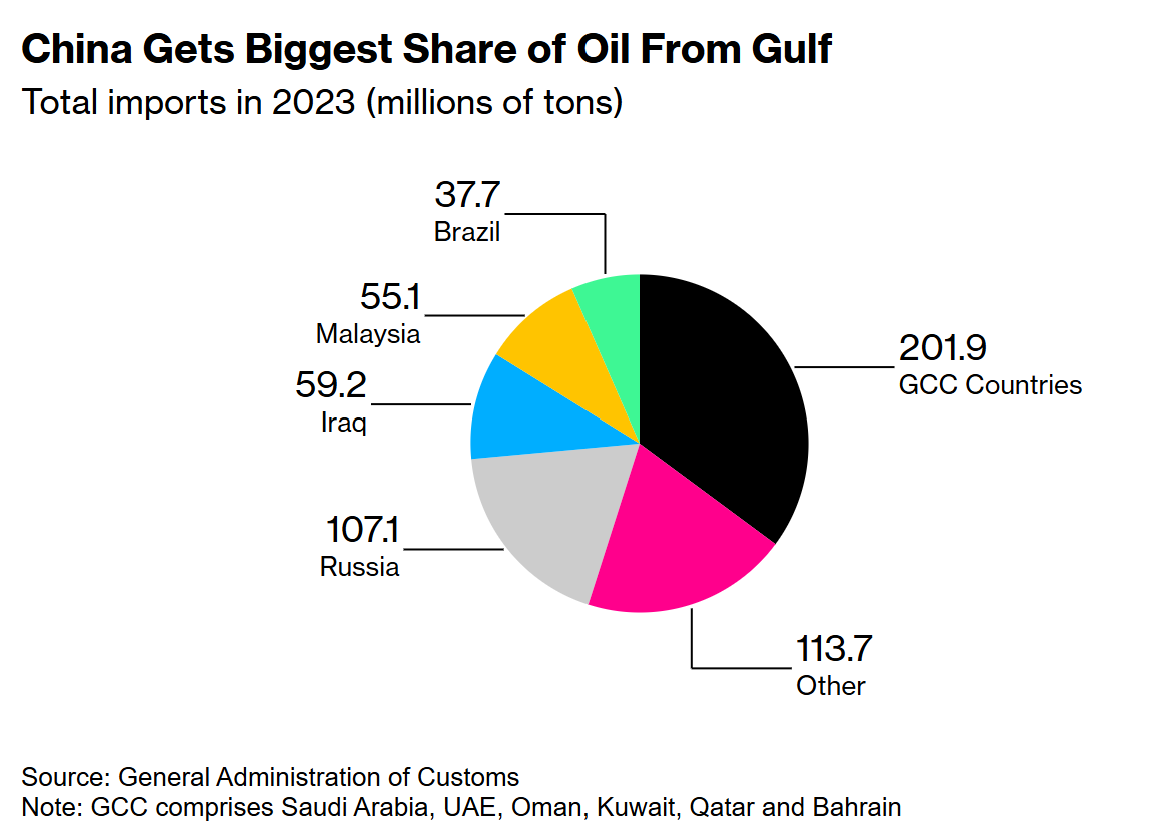From China to the Middle East and much more
This week we explore a growing love story, before moving to Europe's demography. While real-estate booms in India, the growth of NVIDIA is phenomenal as well.
The growing love story between China and the Middle East
As the Biden administration continues its support for Israel in the ongoing conflict, China is aligning itself with Arab nations, advocating for an immediate cease-fire and the recognition of a Palestinian state.
This stance is enabling Beijing to expand its political influence in countries that previously viewed China primarily as an economic partner, while also gaining new allies in its global competition with the United States.
Last year, China facilitated an accord between Saudi Arabia and Iran, historically the Islamic world’s biggest rivals.
Following this diplomatic success, Beijing-based Lenovo Group Ltd. announced a deal on Wednesday to sell $2 billion worth of convertible bonds to Saudi Arabia’s sovereign wealth fund and to establish research and production facilities in the kingdom.
In addition, Saudi Aramco, the state oil firm, is negotiating to acquire a $1.5 billion stake in a Chinese petrochemical company.
Simultaneously, China FAW Group is involved in initiatives to produce electric vehicles in Egypt.
UBS analysts predict that these growing Chinese ties to the Middle East could enhance global energy-related trade by over $400 billion by 2030.
The UAE plays a significant role in China's Belt and Road Initiative, a global infrastructure drive, with more than 6,600 Chinese brands registered in the country.
In 2023, Saudi Arabia attracted $16.8 billion in greenfield investments from China, particularly in the automotive and semiconductor sectors.
For Beijing, the primary import from the region is oil, with China sourcing over one-third of its crude from the Gulf Cooperation Council members, predominantly from Saudi Arabia.
Europe reaching its tipping point?
2024 may be a pivotal moment in European Union history, as its population of 448 million is projected to start a long-term decline. While the EU saw a population increase up to January 2023, largely due to an influx of displaced Ukrainians, this followed a two-year dip caused by the pandemic.
Eurostat had previously predicted that the EU population would peak at 453 million in 2026, before the dipping starts.
However, it now appears that the EU’s anticipated demographic inversion is occurring sooner than many experts expected.
“If we do not consider the demographic trends and mitigate them where possible, we may end up sleepwalking into dark scenarios,” warns Dubravka Šuica, the European Commission’s first vice-president for democracy and demography.
She highlights potential threats to competitiveness, budget pressures, strain on public services and pensions, and widespread job vacancies across all economic sectors.
The EU’s share of the global population has more than halved to less than 6 percent.
The working-age population (ages 20-64), which provides the majority of tax revenues, has decreased from a peak of 270 million in 2011 to an estimated 261 million this year.
Relative to the total population, this group peaked at 61.4 percent in 2008 but has now dropped to 58 percent.
The International Monetary Fund (IMF) predicts a decline in total hours worked in Europe over the next five years, while hours worked in the US are expected to continue rising.
Real-estate growth in India
India's property stocks have surged to their highest levels in 15 years, suggesting a significant breakthrough driven by strong sales and the central bank's decision to maintain stable interest rates.
This positive momentum in India's real estate sector starkly contrasts with China's market, where a builders' index has hit a 12-year low amid an ongoing property crisis.
The resurgence in India's real estate sector, a key contributor to the nation's impressive GDP growth, has been a decade in the making.
In 2023, new home sales reached 329,000 units across the top eight cities, the highest in ten years.
Additionally, new office rentals almost returned to pre-Covid levels, hitting 60 million square feet, both of which have spurred construction activity and job creation.
Valued at $480 billion, the real estate sector accounts for nearly 20% of India's employment. The sector's revival, particularly in housing, can be attributed to regulatory reforms, market consolidation, and the wealth effect. The establishment of a real estate regulator in 2016 introduced greater transparency and financial discipline.
However, the surge in sales has been predominantly in the premium home segment, priced at 15 million rupees ($180,000) and above, which has tripled its market share to 21% over five years.
Meanwhile, the share of affordable housing has decreased from 37% to 20%, highlighting a K-shaped recovery in the economy.
India faces a significant housing deficit, particularly at the lower end of the market. For the real estate boom to be sustained, there must be a revival in demand for affordable housing, which is the largest segment.
Experts estimate that the real estate sector is currently at the midpoint of an 8–10-year growth cycle, which could be shortened by two years if affordable housing sales do not pick up.
The incredible rise of NVIDIA!
Demand for Nvidia’s AI data center graphics processing units (GPUs) has surged dramatically over the past year, driven by major tech companies racing to build the computing infrastructure required for powerful new AI products at scale.
For the three months ending in April, Nvidia reported revenue of $26 billion, surpassing the consensus estimate of $24.7 billion.
This substantial year-over-year increase mirrors the previous quarter's remarkable 265% growth.
Nvidia’s data center revenue, primarily from its sought-after AI chips, soared by 427% year-over-year, reaching $22.6 billion. This surge was fueled by strong demand for Nvidia’s latest Hopper GPUs.
Meanwhile, competitors AMD and Intel have been introducing their own AI data center chips to challenge Nvidia, partnering with Nvidia’s clients to offer alternatives to its software platform.
However, in April, both Intel and AMD reported underwhelming first-quarter results and issued modest guidance, indicating they have yet to fully capitalize on the booming demand.






